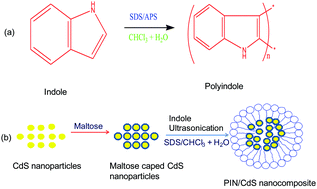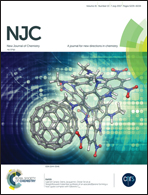Highly sensitive and selective detection of picric acid using a one pot biomolecule inspired polyindole/CdS nanocomposite
Abstract
Picric acid is very dangerous environmental pollutant generated from leather, chemical and dye industries due to its high toxicity. Therefore, efforts have been made to develop techniques for the efficient detection of picric acid. A new and novel biomolecule inspired polyindole/CdS (PIN/CdS) nanocomposite has been synthesized by an in situ chemical polymerization method for the detection of picric acid in organic medium. The PIN/CdS nanocomposite was characterized by means of Fourier transform infrared spectroscopy (FT-IR), X-ray diffraction (XRD), Energy dispersive X-ray (EDAX), ultraviolet-visible (UV-Vis) and fluorescence spectroscopy, in order to evaluate its optical properties, particles size distribution and morphology. The synthesized nanocomposite shows remarkably high sensitivity and selectivity towards picric acid, compared to the other organic compounds like aniline, benzoic acid, nitrobenzene, benzamide and nitromethane. The Stern–Volmer constant (KSV) value was found to be 30 × 103 M−1 for the detection of picric acid, confirming very high sensitivity of the PIN/CdS nanocomposite for picric acid.



 Please wait while we load your content...
Please wait while we load your content...